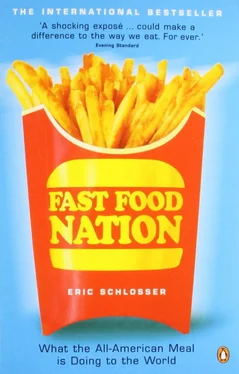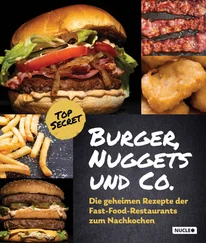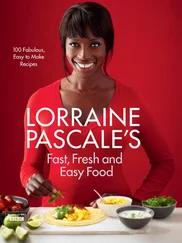Children’s clubs have for years been considered an effective means of targeting ads and collecting demographic information; the clubs appeal to a child’s fundamental need for status and belonging. Disney’s Mickey Mouse Club, formed in 1930, was one of the trailblazers. During the 1980s and 1990s, children’s clubs proliferated, as corporations used them to solicit the names, addresses, zip codes, and personal comments of young customers. “Marketing messages sent through a club not only can be personalized,” James McNeal advises, “they can be tailored for a certain age or geographical group.” A well–designed and well-run children’s club can be extremely good for business. According to one Burger King executive, the creation of a Burger King Kids Club in 1991 increased the sales of children’s meals as much as 300 percent.
The Internet has become another powerful tool for assembling data about children. In 1998 a federal investigation of Web sites aimed at children found that 89 percent requested personal information from kids; only 1 percent required that children obtain parental approval before supplying the information. A character on the McDonald’s Web site told children that Ronald McDonald was “the ultimate authority in everything.” The site encouraged kids to send Ronald an e-mail revealing their favorite menu item at McDonald’s, their favorite book, their favorite sports team — and their name. Fast food Web sites no longer ask children to provide personal information without first gaining parental approval; to do so is now a violation of federal law, thanks to the Children’s Online Privacy Protection Act, which took effect in April of 2000.
Despite the growing importance of the Internet, television remains the primary medium for children’s advertising. The effects of these TV ads have long been a subject of controversy. In 1978, the Federal Trade Commission (FTC) tried to ban all television ads directed at children seven years old or younger. Many studies had found that young children often could not tell the difference between television programming and television advertising. They also could not comprehend the real purpose of commercials and trusted that advertising claims were true. Michael Pertschuk, the head of the FTC, argued that children need to be shielded from advertising that preys upon their immaturity. “They cannot protect themselves,” he said, “against adults who exploit their present-mindedness.”
The FTC’s proposed ban was supported by the American Academy of Pediatrics, the National Congress of Parents and Teachers, the Consumers Union, and the Child Welfare League, among others. But it was attacked by the National Association of Broadcasters, the Toy Manufacturers of America, and the Association of National Advertisers. The industry groups lobbied Congress to prevent any restrictions on children’s ads and sued in federal court to block Pertschuk from participating in future FTC meetings on the subject. In April of 1981, three months after the inauguration of President Ronald Reagan, an FTC staff report argued that a ban on ads aimed at children would be impractical, effectively killing the proposal. “We are delighted by the FTC’s reasonable recommendation,” said the head of the National Association of Broadcasters.
The Saturday-morning children’s ads that caused angry debates twenty years ago now seem almost quaint. Far from being banned, TV advertising aimed at kids is now broadcast twenty-four hours a day, closed-captioned and in stereo. Nickelodeon, the Disney Channel, the Cartoon Network, and the other children’s cable networks are now responsible for about 80 percent of all television viewing by kids. None of these networks existed before 1979. The typical American child now spends about twenty-one hours a week watching television — roughly one and a half months of TV every year. That does not include the time children spend in front of a screen watching videos, playing video games, or using the computer. Outside of school, the typical American child spends more time watching television than doing any other activity except sleeping. During the course of a year, he or she watches more than thirty thousand TV commercials. Even the nation’s youngest children are watching a great deal of television. About one-quarter of American children between the ages of two and five have a TV in their room.
ALTHOUGH THE FAST FOOD chains annually spend about $3 billion on television advertising, their marketing efforts directed at children extend far beyond such conventional ads. The McDonald’s Corporation now operates more than eight thousand playgrounds at its restaurants in the United States. Burger King has more than two thousand. A manufacturer of “playlands” explains why fast food operators build these largely plastic structures: “Playlands bring in children, who bring in parents, who bring in money.” As American cities and towns spend less money on children’s recreation, fast food restaurants have become gathering spaces for families with young children. Every month about 90 percent of American children between the ages of three and nine visit a McDonald’s. The seesaws, slides, and pits full of plastic balls have proven to be an effective lure. “But when it gets down to brass tacks,” a Brandweek article on fast food notes, “the key to attracting kids is toys, toys, toys.”
The fast food industry has forged promotional links with the nation’s leading toy manufacturers, giving away simple toys with children’s meals and selling more elaborate ones at a discount. The major toy crazes of recent years — including Pokémon cards, Cabbage Patch Kids, and Tamogotchis — have been abetted by fast food promotions. A successful promotion easily doubles or triples the weekly sales volume of children’s meals. The chains often distribute numerous versions of a toy, encouraging repeat visits by small children and adult collectors who hope to obtain complete sets. In 1999 McDonald’s distributed eighty different types of Furby. According to a publication called Tomart’s Price Guide to McDonald’s Happy Meal Collectibles , some fast food giveaways are now worth hundreds of dollars.
Rod Taylor, a Brandweek columnist, called McDonald’s 1997 Teenie Beanie Baby giveaway one of the most successful promotions in the history of American advertising. At the time McDonald’s sold about 10 million Happy Meals in a typical week. Over the course often days in April of 1997, by including a Teenie Beanie Baby with each purchase, McDonald’s sold about 100 million Happy Meals. Rarely has a marketing effort achieved such an extraordinary rate of sales among its intended consumers. Happy Meals are marketed to children between the ages of three and nine; within ten days about four Teenie Beanie Baby Happy Meals were sold for every American child in that age group. Not all of those Happy Meals were purchased for children. Many adult collectors bought Teenie Beanie Baby Happy Meals, kept the dolls, and threw away the food.
The competition for young customers has led the fast food chains to form marketing alliances not just with toy companies, but with sports leagues and Hollywood studios. McDonald’s has staged promotions with the National Basketball Association and the Olympics. Pizza Hut, Taco Bell, and KFC signed a three-year deal with the NCAA. Wendy’s has linked with the National Hockey League. Burger King and Nickelodeon, Denny’s and Major League Baseball, McDonald’s and the Fox Kids Network have all formed partnerships that mix advertisements for fast food with children’s entertainment. Burger King has sold chicken nuggets shaped like Teletubbies. McDonald’s now has its own line of children’s videos starring Ronald McDonald. The Wacky Adventures of Ronald McDonald is being produced by Klasky-Csupo, the company that makes Rugrats and The Simpsons . The videos feature the McDonaldland characters and sell for $3.49. “We see this as a great opportunity,” a McDonald’s executive said in a press release, “to create a more meaningful relationship between Ronald and kids.”
Читать дальше












